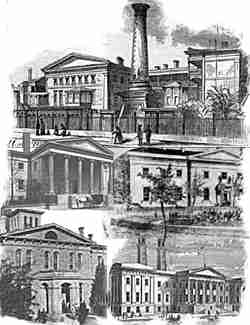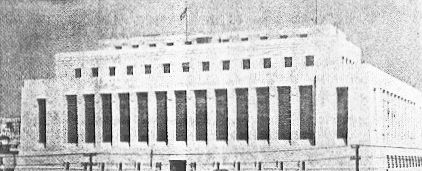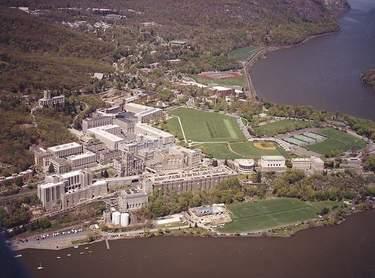
UNITED STATES MINTS
Click for Modern United States Mints

|
|

James Barton Longacre 1794 - 1869 Named Chief Engraver of the U.S. Mint in 1844
The name "mint" is derived from the Temple of Juno Monetos, Rome, where coins were made as early as 269 B.C.
The present mint, operating the most modern machinery for the manufacture of coins, is indeed a marked contrast to the early day methods of coining money. The melting departments which formerly were fired with coal burning furnaces were improved at the turn of the century to gas and electric furnaces.
In 1782, Thomas Jefferson, then a member of the House of Representatives, recommended a Dollar Unit of Exchange, because it was already at that time familiar to most people and a convenient decimal.
On March 3, 1791, the Congress of the United States, by the passing of a resolution directed that a mint be established. President Washington did not act upon these recommendations until April of 1792.
President George Washington appointed a well known scientist, David Rittenhouse, as the first director of the U. S. mint, and a mint building was within a few months under construction in Philadelphia, Pennsylvania, located at Seventh and Sugar Alley (now Filbert Street.). It was a three story building and bore the familiar sign painted on the building between the second and third floors, "Ye Old Mint".

Established by Congress in 1792, at Seventh and Sugar Alley (now Filbert Street), Philadelphia.
THE PHILADELPHIA MINT
The Philadelphia Mint, now rebuilt, is still in Operations.

THE DAHLONEGA, GEORGIA MINT
The Dahlonega Mint was authorized by Act of March 3, 1835,
with first coinage in 1838.
The building passed out of government possession in
1871.

Mint was in operation from 1838 to February 1961.
Building donated to
Georgia for educational purposes, April 10, 1871. Destroyed by fire, December
20, 1878.
THE CHARLOTTE, NORTH CAROLINA MINT
The Charlotte Mint was authorized by Act of March 3, 1835. Coinage operations were conducted there from 1838 through May 20, 1861.
The operations were discontinued due to the Civil War and never resumed. The mint property was reopened as an assay office in 1868, and ceased operations June 13, 1913, when the plant was closed.
THE NEW ORLEANS, LOUISIANA MINT
The New Orleans Mint was authorized by the Act of March 3,
1835. It first produced coins in 1838.
Operations were suspended from 1861 to
1879, however, it continued its assay operations from 1876.

Suspended operations in 1861, when it was seized by the Confederates. Reopened in 1879. Mint Mark, "O".
Coinage resumed in 1879, and continued until 1909. It operated as an assay office from 1909 until 1942, when it was permanently closed. At one time this mint was used as a federal prison. This mint also was taken over by the Confederate Army during the Civil War and some Confederate coins were produced there.
|
|
THE SAN FRANCISCO MINT
The San Francisco Mint was established by authorization of the Act of July 3, 1852. The first coinage was recorded in 1854. Coinage operations were suspended in 1955, but the mint continued to operate as an assay office.

Established by Congress July 3, 1852.
Coinage was first recorded in 1854,
and coinage operations were suspended in 1955.
The name was officially changed from "mint" to "assay office" on July 11, 1962.
THE DENVER MINT
The Denver Mint was authorized by the Act of April 21, 1862, and it operated as an assay office until 1906. Coinage operations were started at the Denver mint in 1906, and the mint is still in operation.

Authorized by Congress April 21, 1862. Coinage operations were started in
1906 and the mint is still in operation.
THE CARSON CITY MINT
The Carson City Mint was authorized by Act of March 3, 1863. Coinage operations started in 1870 and lasted through 1893. The mint then operated as an assay office until 1933 when it was closed.

Organized in 1870; discontinued in 1893. Min Mark, "CC".
WEST POINT MINT - NEW YORK
The West Point Bullion Depository was erected in 1937 as a storage
facility for silver bullion and was nicknamed "The Fort Knox of
Silver." In 1988, the US government approved the most recent branch
mint at West Point, N.Y. to assist in striking modern gold and silver issues
with the "W" mint mark including various Commemoratives and
Bullion Coins. From 1973 to 1986, West Point produced cents, and in 1980 began
striking gold medallions. Shortly afterward, approximately 20 billion dollars
worth of gold was stored in its vaults, making it second only to Fort Knox for
gold storage. Today, it is also the major producer of gold coins.

|
|
|
|